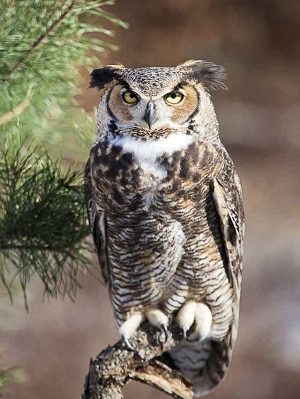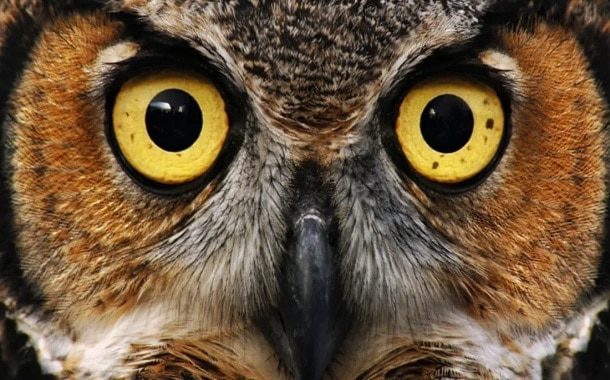How Much Does an Owl Cost?
Last Updated on February 20, 2024
Written by CPA Alec Pow | Content Reviewed by ![]() CFA Alexander Popinker
CFA Alexander Popinker
Owning an owl seems exotic and exciting, but before bringing one of these majestic birds of prey into your home there are many factors to consider. What are the costs associated with purchasing and caring for an owl?
Do you need special licenses or permits? What are the daily care requirements? This article will provide an overview of the legalities, expenses, and responsibilities involved in keeping an owl as a pet.
Highlights
- Initial purchase price of $200 to $10,000 or more
- Substantial startup costs for aviary and supplies ($5,000+)
- Ongoing expenses for food, vet care, permits ($2,000+/year)
- Daily care and maintenance requires 2+ hours
- Legal wildlife permits required ($100-$500)
- Ethical concerns over captive owl welfare
- Support conservation efforts if considering ownership
How Much Does an Owl Cost?
The purchase price for a pet owl can vary dramatically based on species, age, source, and rarity.
- Small owl species like Screech Owls and Pygmy Owls cost $200-$500 on average.
- Medium-sized owls like Barred Owls and Barn Owls range from $500-1,500.
- Large owl species like the Great Horned Owl can cost $1,000-$5,000.
- Rare or exotic owl species can cost $5,000-$10,000+.
- Captive bred baby owls are generally less expensive than mature wild-caught specimens.
- Common domesticated species are cheaper than rare imported owls.
- Purchasing from an owl breeder is more expensive than adopting a rescue.
So you can expect to pay anywhere from $200 for a young Screech Owl from a breeder up to $10,000 or more for a mature Eurasian Eagle Owl imported from Europe. Do your research to find an ethical source and affordable price for the species you’re interested in.
According to Travelling Birder, some owls, such as the Eurasian Eagle Owl, are captive-bred and usually go for about $3,000 to $3,500. Owls can vary significantly in price, depending on a number of different factors. Some owls may be more expensive due to their size, rarity, or unique coloring, while other owls may be less costly because they are more common or easier to breed.
Additionally, the price of an owl can depend on where you are purchasing it from, such as a breeder, pet store, or other seller.
Raptors Etc offers owls for sale, including a Female Spectacled owl for $3,500 and Eurasian eagle owlets for which deposits are being taken for the 2024 hatch.
These owlets are hand-raised from the day they hatch and DNA sexed. No federal license is needed.
Legal Considerations
Owls are classified as exotic animals, so there are laws and regulations surrounding private ownership. Depending on where you live, you may need to obtain wildlife permits and licenses in order to legally own an owl.
Wildlife Permits and Licensing
Most regions have exotic pet laws that restrict or regulate owning wildlife. You’ll likely need to apply for a special permit to house an owl, which can cost $100-$500 depending on your location. On top of that, you may need to pass a facility inspection and pay annual permit renewal fees.
If you want to train your owl for hunting, you’ll need to obtain a falconry license. This involves taking a written test, having your facilities and equipment inspected, and apprenticing under a master falconer. Falconry licenses can cost $100-$500 initially.
Endangered Species and Wildlife Protection
Some owl species like the Spotted Owl are endangered with restrictions around private ownership. Make sure the species you choose isn’t protected by state or federal wildlife agencies. Violating these laws can result in heavy fines and even jail time.
Financial Costs
Beyond permits and licensing, owning an owl carries many ongoing expenses from habitat set up to veterinary bills. Be prepared for high initial costs as well as monthly costs to properly care for your bird.
Setup Costs
To house an owl you need an outdoor aviary at a minimum of 10′ x 10′ x 7′ tall. The initial construction costs including materials, roofing, and wiring can range from $2,000-$5,000. Ongoing maintenance to keep the enclosure secure may run $200 per year.
You’ll also need basic supplies like perches, baths, gloves, and falconry equipment which can cost $500-$1,500.
Ongoing Costs
Feeding an owl a diet of whole mice, chicks or rats costs approximately $50-100 per month. Storage and handling of frozen feeders is another expense.
Routine and emergency veterinary visits for your owl can reach $2,000 or more per year. Exotic pet insurance is available but comes at an additional monthly premium.
Owl Care and Maintenance
Caring for an owl takes time, effort, and careful attention to the bird’s needs. Their daily requirements and potential health issues should be considered.
Daily Care
You can also read our articles about the cost of a falcon, a hawk, or a toucan.
Owls are fed 1-2 prey items daily depending on weight. Thawing feeder rodents and cleaning the aviary of feathers and waste is essential. Aviary maintenance and disinfection is estimated at 2 hours per week.
You’ll also need to provide bathing water, swap out perches/toys, monitor the bird’s health, and socialize it through handling and training. Supervision is required when the owl is outside its enclosure.
Health and Veterinary Needs
 It’s critical to have an avian vet nearby that sees exotic birds. Annual exams and lab work can identify issues early.
It’s critical to have an avian vet nearby that sees exotic birds. Annual exams and lab work can identify issues early.
Common health problems in captive owls include:
- Obesity – from lack of flight and overfeeding
- Foot infections – often require ongoing medication
- Metabolic bone disease – calcium deficiency
- Stress behaviors like feather plucking
Finding experienced care for an ill owl can be difficult and expensive.
Ethical and Conservation Concerns
Before obtaining an owl, think carefully about whether captivity is humane for the bird and aligned with conservation efforts.
Ethical Considerations
Owls are wild animals that fly miles in nature. Restricting their movement and environment raises welfare concerns over behavioral problems like pacing and stress. Some believe keeping owls as pets is inherently unethical.
Conservation Efforts
Most owls available for purchase are bred from captive stock, but wild owl populations face many threats. As an owner, you can support owls by donating to conservation groups, volunteering at rehabilitation centers, and purchasing from responsible breeders.
Alternatives to Owning an Owl
If you don’t want to fully commit to ownership, there are other ways to engage with birds of prey:
- Visit owl sanctuaries and wildlife centers where you can watch and learn about them in a natural setting.
- Sponsor or adopt an owl at a conservation facility to aid in rehabilitation efforts.
- Volunteer at a raptor rehabilitation facility to gain hands-on experience caring for injured owls.
Final Words
Owning an owl is a major commitment in terms of cost, care, and legal obligations. But for committed enthusiasts who educate themselves, prepare proper housing, and put in the time and work, sharing life with one of these incredible birds can be a rewarding adventure.
Be sure to consider whether ownership aligns with your lifestyle, ethics, and ability to meet all of the owl’s complex needs.
Frequently Asked Questions
What is the lifespan of an owl?
In the wild, owls generally live between 5-15 years depending on the species. Barred and barn owls often reach 10 years on average. In captivity, with attentive care and veterinary treatment, owls typically survive 25-30 years though some have lived over 50 years in captivity. Proper diet, large enclosure space, and environmental enrichment can maximize lifespan.
Is it rare to find an owl?
It depends on the species, but many owls are actually quite common in the wild globally. Smaller owl species that are active during the day like the Eastern Screech Owl are more often seen. Nocturnal owls that roost in dense trees like the Barred Owl can be harder to spot.
In total, there are around 200 owl species worldwide, with over 20 native owl types found across North America. With quiet woodland walks there’s a good chance of hearing or catching sight of wild owls.
Are owls intelligent?
Yes, owls display many signs of high intelligence compared to other bird species. Their large brains relative to body size indicates greater cognitive capacity. Owls are adept problem solvers in the wild, using tools and strategies to hunt prey.
They can learn complex associations and patterns, recognize individual human faces, and develop social bonds with mates. Owls in captivity thrive when provided mental stimulation through training, toys, and human interaction showing their advanced intellectual abilities.


Leave a Reply
Want to join the discussion?Feel free to contribute!